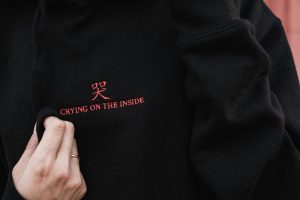Cultural Threads: Fashion as a Global Communication Language
Fashion has always been a way for individuals to express their identities, beliefs, and values. It is a powerful tool that not only serves as a form of self-expression, but also as a means of communication. In today’s globalized world, the fashion industry has become a cultural thread that connects people from different backgrounds and transcends language barriers. From traditional garments to modern designs, fashion is a universal language that speaks to the diversity and interconnectedness of our world. In this article, we will explore how fashion serves as a global communication language and how it has become an integral part of our cultural identity.
The Emergence of Fashion as a Global Communication Language
Fashion has always been deeply intertwined with culture. It reflects the history, customs, and traditions of a particular society. However, with the rise of globalization, fashion has evolved from a cultural expression to a global phenomenon. The fashion industry has expanded its reach to every corner of the world, making it more accessible and influential than ever before. With the help of social media and the internet, fashion trends can now be shared and adopted by people from diverse backgrounds, creating a global fashion culture that transcends borders.
The Power of Visual Communication
In a world where communication is mostly done through words, fashion stands out as a powerful form of visual communication. Every piece of clothing, accessories, and makeup tells a story, conveying a message without the need for words. It is a form of non-verbal communication that is understood by people regardless of their cultural and linguistic differences. For example, a traditional outfit worn by a person from a particular culture can instantly communicate their heritage and identity to others.
Cultural Exchange and Understanding
As the fashion industry continues to expand globally, it has also opened doors for cultural exchange and understanding. Fashion designers, photographers, and models from different countries can now collaborate and share their creative ideas, leading to the fusion of diverse styles and trends. This not only promotes diversity but also breaks down cultural stereotypes. Through fashion, people can learn about different cultures, their traditions, and way of life, fostering cross-cultural understanding and acceptance.
Fashion as a Platform for Social and Political Statements
Fashion has always been a form of self-expression and activism. From the suffragette movement to modern-day protests, clothing has been used as a tool to make social and political statements. In today’s world, where issues such as sustainability, gender equality, and inclusivity are in the spotlight, fashion has become a platform for promoting these causes. Designers are incorporating ethical and sustainable practices into their collections, and fashion shows are becoming more diverse, showcasing a variety of sizes, ages, and ethnicities on the runway.
The Role of Fashion in Preserving Cultural Heritage
Fashion not only serves as a form of cultural expression but also plays a significant role in preserving cultural heritage. Traditional garments and textiles that have been passed down for generations are being revitalized and given a modern twist to keep them relevant. By incorporating traditional elements into modern designs, fashion is helping to keep cultural traditions and identities alive.
The Future of Fashion as a Global Communication Language
In the increasingly interconnected world, the fashion industry will continue to evolve and serve as a global communication language. With the rise of sustainable and ethical practices, fashion is becoming more aware of its impact on the world and is using its influence to promote positive change. As technology advances and the world becomes more connected, fashion will break cultural barriers and unite people from different backgrounds, promoting diversity and understanding.
In conclusion, fashion is no longer just a means of dressing up, but a powerful tool for communication and cultural exchange. It transcends language barriers and connects people from all around the world. As we continue to move towards a more globalized society, fashion will continue to be a cultural thread that weaves us all together, reminding us of our shared humanity and diversity.











